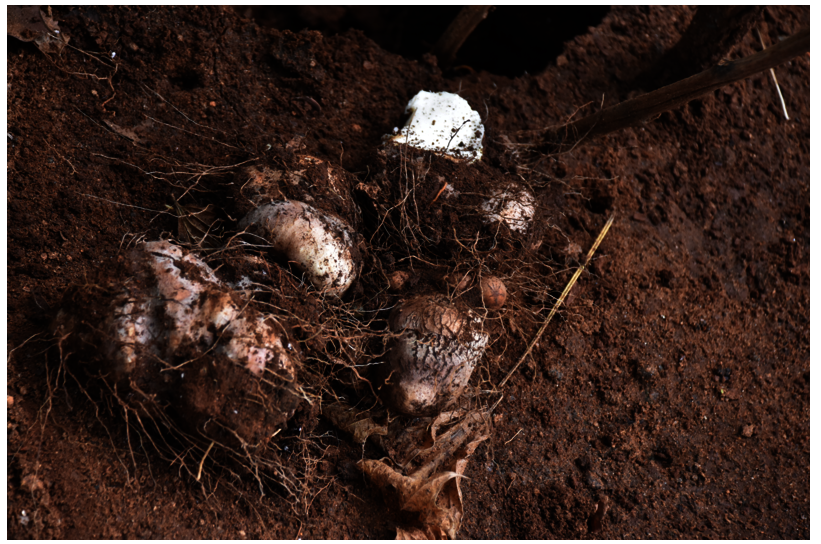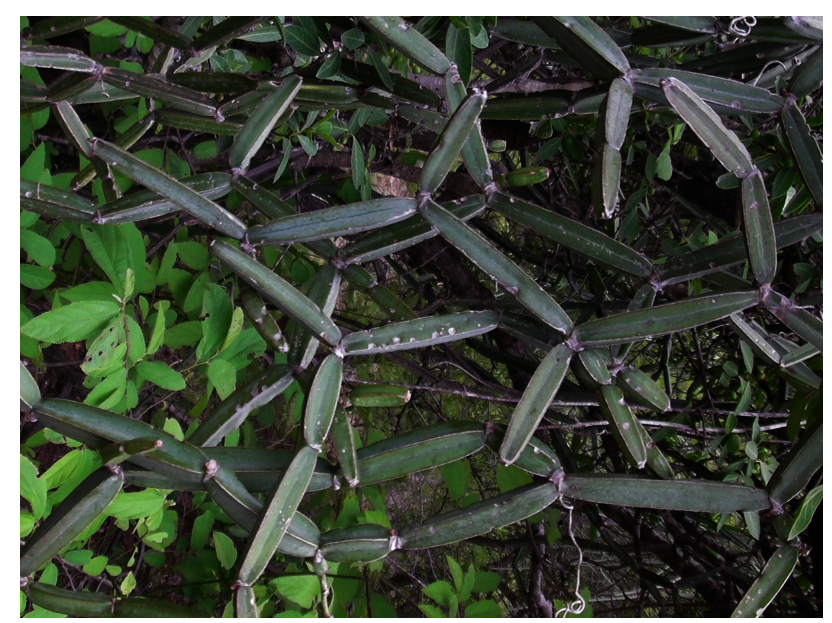By Madhu Ramnath | Project Leader
Greetings from the forest!
Knowledge and information on neutralizing bitter or toxic principles present in wild foods are part of the workshops conducted with indigenous communities to make younger generations aware of processing techniques for wild foods so that they are safe enough for consumption. This report presents the case of two wild foods and how their toxic principles can be neutralized so they are edible.
The yam Dioscorea daemona
The commonly found tropical yam of peninsular India, Dioscorea daemona, is a tuber that contains the toxin doiscorine. The tubers are acrid and poisonous and there have been reports of fatality from places where they have been consumed without adequate treatment. In India, these yams go by the local names: Hindi and Marathi, baichani; Tamil, peiperendei; Durwa, kulia kurda.
The most common treatment for neutralizing the toxins followed by many indigenous communities is to slice the tubers and to stand them in running water overnight. After this is done, the tubers are then cooked, with the water drained off repeatedly, reducing the acridity and making the tuber suitable for garnishing with whatever the preferred spices may be. Usually, processed tubers are added to curries. In recent times they are sliced very thin and made into chips. These are apparently popular as healthy food.
The climber Cissus quadrangularis
This is a climber commonly found in the drier parts of India, recognizable with its square stems and tendrils with which it climbs. The skin of the stem/plant contains calcium oxalate crystals that unless neutralised or removed cause an irritation of the skin and the throat. If the plant is consumed without treatment it can cause extreme irritation of the throat as well as a heaviness of the chest leading to difficulty in breathing. Local names include: Hindi, hadjora; Tamil, pirandai; Telugu, nalleru; Edible Stemmed Vine.
The most common treatment before consuming is scraping the outer layer of the skin thoroughly, and then slicing and lightly cooking the stem. Care must be taken to use only the young shoots and to avoid the mature parts of the plant. These are then added to curries.
A popular preparation is that of a spicy chutney, mashing the stems along with sauteed chilies and onions, together with small quantities of tamarind juice and salt. The plant is rich in Vitamin C and is used extensively in the treatment of bone fractures.
By Madhu Ramnath & NTFP-EP Asia | Project Leader
By NTFP-EP | Project Team
Project reports on GlobalGiving are posted directly to globalgiving.org by Project Leaders as they are completed, generally every 3-4 months. To protect the integrity of these documents, GlobalGiving does not alter them; therefore you may find some language or formatting issues.
If you donate to this project or have donated to this project, you can receive an email when this project posts a report. You can also subscribe for reports without donating.
Support this important cause by creating a personalized fundraising page.
Start a Fundraiser
